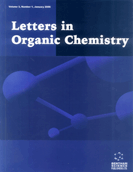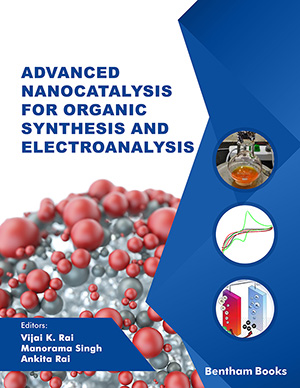Abstract
Amines are “derivatives of ammonia” and important key intermediates for applications in the industrial, pharmaceutical, electronics, etc. They have been used to synthesize industrially important azo dyes, which are used to color various materials. Moreover, amine functionality is present in several important biological molecules. Biogenic amines are found in living organisms and play essential physiological functions in the body. They are prepared from the amination and transamination reaction of carbonyl compounds such as aldehydes and ketones and the decarboxylation reaction of amino acids. Thus, the various applications and requirements of essential amine scaffolds paid attention to researchers to develop novel synthetic protocols to synthesize these compounds. In organic chemistry, various methods synthesize amines; however, green synthetic methods have recently become a trend. By writing this review, our main focus was to provide a brief on the importance of some biogenic amines and the synthesis of both amines via green synthetic methods.
Keywords: Amines, biogenic amines, traditional method, green synthetic methods, reduction of nitro compounds, p-nitrophenol.
[http://dx.doi.org/10.1016/j.watres.2013.09.027] [PMID: 24112627]
(b) Salman, M.; Jabbar, A.; Farooq, S.; Bashir, I.; Rafiq, M.S.K. New heterocyclic azo-disperse dyes; their synthesis, characterization, application, photo physical properties and solvatochromic studies. J. Mol. Struct., 2023, 1287, 135664.
[http://dx.doi.org/10.1016/j.molstruc.2023.135664];
(c) Mahmoud, S.E.; Fadda, A.A.; Latif, A.E.; Elmorsy, M.R. Synthesis of novel triphenylamine-based organic dyes with dual anchors for efficient dye-sensitized solar cells. Nanoscale Res. Lett., 2022, 17(1), 71.
[http://dx.doi.org/10.1186/s11671-022-03711-6] [PMID: 35927533];
(d) Xu, S.; Ye, L. Synthesis and properties of monomer cast nylon-6-b-polyether amine copolymers with different structures. RSC Advances, 2015, 5(41), 32460-32468.
[http://dx.doi.org/10.1039/C5RA03589A];
(e) Patel, G.; Patel, A.R.; Banerjee, S. Visible light-emitting diode light-driven one-pot four component synthesis of poly-functionalized imidazoles under catalyst- and solvent-free conditions. New J. Chem., 2020, 44(31), 13295-13300.
[http://dx.doi.org/10.1039/D0NJ02527E];
(f) Payra, S.; Saha, A.; Wu, C.M.; Selvaratnam, B.; Dramstad, T.; Mahoney, L.; Verma, S.K.; Thareja, S.; Koodali, R.; Banerjee, S. Fe–SBA-15 catalyzed synthesis of 2-alkoxyimidazo[1,2-a]pyridines and screening of their in silico selectivity and binding affinity to biological targets. New J. Chem., 2016, 40(11), 9753-9760.
[http://dx.doi.org/10.1039/C6NJ02134D];
(g) Payra, S.; Saha, A.; Banerjee, S. Nano-NiFe2O4 catalyzed microwave assisted one-pot regioselective synthesis of novel 2-alkoxyimidazo[1,2-a]pyridines under aerobic conditions. RSC Advances, 2016, 6(15), 12402-12407.
[http://dx.doi.org/10.1039/C5RA25540F];
(h) Mohammadi, M.; Khodamorady, M.; Tahmasbi, B.; Bahrami, K.; Choghamarani, G.A. Boehmite nanoparticles as versatile support for organic–inorganic hybrid materials: Synthesis, functionalization, and applications in eco-friendly catalysis. J. Ind. Eng. Chem., 2021, 97, 1-78.
[http://dx.doi.org/10.1016/j.jiec.2021.02.001]
[http://dx.doi.org/10.1007/s11164-019-03930-0]
[http://dx.doi.org/10.1021/acs.inorgchem.1c03284] [PMID: 35285616]
[http://dx.doi.org/10.1021/acsanm.3c05230]
[http://dx.doi.org/10.1039/D3NA00580A] [PMID: 38024320];
(m) Mohammadi, M.; Choghamarani, G.A.; Khil, H.N. l–aspartic acid chelan–Cu (II) complex coted on ZrFe2O4 MNPs catalyzed one–pot annulation and cooperative geminal-vinylogous anomeric–based oxidation reactions. J. Phys. Chem. Solids, 2023, 177, 111300.
[http://dx.doi.org/10.1016/j.jpcs.2023.111300];
(n) Choghamarani, G.A.; Mohammadi, M.; Tamoradi, T.; Ghadermazi, M. Covalent immobilization of Co complex on the surface of SBA-15: Green, novel and efficient catalyst for the oxidation of sulfides and synthesis of polyhydroquinoline derivatives in green condition. Polyhedron, 2019, 158, 25-35.
[http://dx.doi.org/10.1016/j.poly.2018.10.054];
(o) Kazemi, M.; Mohammadi, M. Magnetically recoverable catalysts: Catalysis in synthesis of polyhydroquinolines. Appl. Organomet. Chem., 2020, 34(3), e5400.
[http://dx.doi.org/10.1002/aoc.5400];
(p) Soleiman-Beigi, M.; Noroozian, Z.; Sarai, R.; Kohzadi, H.; Naghipour, A. Palladium and zirconium nanoparticles immobilized on functionalized natural asphalt sulfonate as magnetically and recoverable nanocatalysts for the synthesis of symmetrical and unsymmetrical disulfides. React. Kinet. Mech. Catal., 2023, 136(5), 2465-2480.
[http://dx.doi.org/10.1007/s11144-023-02487-9]
[http://dx.doi.org/10.3184/030823405774308961]
[http://dx.doi.org/10.1002/ep.670100321]
[http://dx.doi.org/10.1002/ange.201001651]
[http://dx.doi.org/10.1039/C5GC01859E]
[http://dx.doi.org/10.1021/acssuschemeng.5b01096]
[http://dx.doi.org/10.1039/c4ra00749b]
[http://dx.doi.org/10.1021/ol4005917] [PMID: 23545123]
[http://dx.doi.org/10.1016/j.jcat.2017.02.012]
[http://dx.doi.org/10.1126/science.1166401] [PMID: 19074342]
[http://dx.doi.org/10.1021/cs300707y]
[http://dx.doi.org/10.1002/anie.201508223] [PMID: 26749298]
[http://dx.doi.org/10.1016/j.tetlet.2008.04.089]
[http://dx.doi.org/10.5185/amlett.2017.1453] [PMID: 30220824]
[http://dx.doi.org/10.1021/acs.orglett.8b02829] [PMID: 30350675]
[http://dx.doi.org/10.1021/acsomega.0c03562] [PMID: 33283089]
[http://dx.doi.org/10.1016/0168-1605(95)00032-1] [PMID: 8796424]
[http://dx.doi.org/10.5344/ajev.1999.50.1.128]
[http://dx.doi.org/10.1515/pterid-2017-0012]
[http://dx.doi.org/10.1093/ajcn/85.5.1185] [PMID: 17490952]
[http://dx.doi.org/10.1590/S0365-05962010000200010] [PMID: 20520935]
[http://dx.doi.org/10.2174/1874226200902010009]
[http://dx.doi.org/10.1182/blood-2012-07-443903] [PMID: 23315169]
[http://dx.doi.org/10.3390/molecules27051680] [PMID: 35268781]
[http://dx.doi.org/10.1111/j.1365-2249.2008.03714.x] [PMID: 18721322]
[http://dx.doi.org/10.1038/srep39934] [PMID: 28074918]
[http://dx.doi.org/10.1111/j.1476-5381.2011.01706.x] [PMID: 21958009]
[http://dx.doi.org/10.1161/01.HYP.0000172353.62657.8b] [PMID: 15967868]
[http://dx.doi.org/10.1016/j.foodchem.2006.08.028]
[http://dx.doi.org/10.2174/1570159X13666141210222409] [PMID: 26074742]
[http://dx.doi.org/10.1111/1541-4337.12212] [PMID: 33401839]
[http://dx.doi.org/10.1007/978-1-61779-034-8_1] [PMID: 21318864]
[http://dx.doi.org/10.3389/fchem.2013.00042] [PMID: 24790970]
[http://dx.doi.org/10.1016/j.bbabio.2006.05.034] [PMID: 16828052];
(b) Landete, J.M.; Arena, M.E.; Pardo, I.; de Nadra, M.M.C.; Ferrer, S. The role of two families of bacterial enzymes in putrescine synthesis from agmatine via agmatine deiminase. Int. Microbiol., 2010, 13(4), 169-177.
[PMID: 21404211]
[http://dx.doi.org/10.1007/s11814-016-0079-5];
(b) Sagong, H.Y.; Kim, K.J. Lysine decarboxylase with an enhanced affinity for pyridoxal 5-phosphate by disulfide bond-mediated spatial reconstitution. PLoS One, 2017, 12(1), e0170163.
[http://dx.doi.org/10.1371/journal.pone.0170163] [PMID: 28095457]
[http://dx.doi.org/10.1021/bi602498k] [PMID: 17585781];
(b) Sánchez-Jiménez, F.; Ruiz-Pérez, M.V.; Urdiales, J.L.; Medina, M.A. Pharmacological potential of biogenic amine–polyamine interactions beyond neurotransmission. Br. J. Pharmacol., 2013, 170(1), 4-16.
[http://dx.doi.org/10.1111/bph.12109] [PMID: 23347064]
[http://dx.doi.org/10.1093/aob/mcp259] [PMID: 19828463]
[http://dx.doi.org/10.1016/j.ejphar.2012.03.046] [PMID: 22497998]
[http://dx.doi.org/10.1080/713609209] [PMID: 12641342]
[http://dx.doi.org/10.1093/jxb/eri102] [PMID: 15723827]
[http://dx.doi.org/10.1124/mol.59.1.24] [PMID: 11125020];
(b) Pegg, A.E. Mammalian polyamine metabolism and function. IUBMB Life, 2009, 61(9), 880-894.
[http://dx.doi.org/10.1002/iub.230] [PMID: 19603518]
[http://dx.doi.org/10.1104/pp.104.055483] [PMID: 15849310]
[http://dx.doi.org/10.4161/cbt.19241] [PMID: 22258329]
[http://dx.doi.org/10.1093/ajcn/83.2.508S] [PMID: 16470022]
[http://dx.doi.org/10.1021/ja01078a041]
[http://dx.doi.org/10.1002/pol.1965.100030706]
[http://dx.doi.org/10.1021/jo50015a017]
[http://dx.doi.org/10.1002/cber.188101402242]
[http://dx.doi.org/10.1002/1615-4169(200212)344:10<1037::AID-ADSC1037>3.0.CO;2-3]
[http://dx.doi.org/10.1080/01614949408009469]
[http://dx.doi.org/10.1016/j.apcata.2005.08.024]
[http://dx.doi.org/10.1039/C39790000870]
[http://dx.doi.org/10.1021/om000309r]
[http://dx.doi.org/10.1021/ja01192a022] [PMID: 18105932]
[http://dx.doi.org/10.1021/ol402212g] [PMID: 24083640]
[http://dx.doi.org/10.1021/ja01000a057]
[http://dx.doi.org/10.1021/ja00772a052] [PMID: 5054412]
[http://dx.doi.org/10.1002/adsc.200600638]
[http://dx.doi.org/10.1039/c39810000611]
[http://dx.doi.org/10.1016/S0040-4039(01)92965-X]
[http://dx.doi.org/10.1002/anie.196703071]
[http://dx.doi.org/10.1007/s10562-005-7431-4]
[http://dx.doi.org/10.1016/S0040-4039(01)81169-2]
[http://dx.doi.org/10.1021/ar00010a001]
[http://dx.doi.org/10.1021/ja01162a527]
[http://dx.doi.org/10.1039/C5CC01131K] [PMID: 25872865]
[http://dx.doi.org/10.1002/adfm.201905423]
[http://dx.doi.org/10.1021/acs.est.7b00806] [PMID: 28485927]
[http://dx.doi.org/10.1016/j.cej.2019.123304]
[http://dx.doi.org/10.1021/acs.chemmater.6b02209]
[http://dx.doi.org/10.1021/op025589w]
[http://dx.doi.org/10.1039/C8NA00029H] [PMID: 36132485]
[http://dx.doi.org/10.3390/nano9070936] [PMID: 31261696]
[http://dx.doi.org/10.1002/0471224480]
[http://dx.doi.org/10.1007/s41061-019-0246-3] [PMID: 31332546]
[http://dx.doi.org/10.1002/ardp.201800281] [PMID: 30994941]
[http://dx.doi.org/10.1016/j.bmc.2015.05.040] [PMID: 26081761]
[http://dx.doi.org/10.1016/j.ejmech.2017.10.051] [PMID: 29126722]
[http://dx.doi.org/10.1016/j.jece.2020.104401]
[http://dx.doi.org/10.1002/anie.201300441] [PMID: 24421264]
[http://dx.doi.org/10.1021/ja500590n] [PMID: 24650288]
[http://dx.doi.org/10.1016/j.jhazmat.2011.09.092] [PMID: 22019107]
[http://dx.doi.org/10.1039/c2cy00454b]
[http://dx.doi.org/10.1016/j.apcatb.2014.07.009]
[http://dx.doi.org/10.1016/j.apsusc.2021.149070]
[http://dx.doi.org/10.3906/kim-1910-21] [PMID: 33488169]
[http://dx.doi.org/10.1166/jnn.2016.10858] [PMID: 27427658]
[http://dx.doi.org/10.1021/acsami.7b18371] [PMID: 29557642]
[http://dx.doi.org/10.1021/jo00869a025]
[http://dx.doi.org/10.1080/00397910008087439]
[http://dx.doi.org/10.1002/anie.200700823] [PMID: 17579907]
[http://dx.doi.org/10.1021/jo800863m] [PMID: 18656983]
[http://dx.doi.org/10.1007/s10562-008-9452-2]
[http://dx.doi.org/10.1021/jp312588u] [PMID: 23616909]
[http://dx.doi.org/10.1016/j.tetlet.2010.01.067]
[http://dx.doi.org/10.1016/j.catcom.2013.02.024]
[http://dx.doi.org/10.1039/C4RA11667D]
[http://dx.doi.org/10.1016/j.cej.2016.04.029]
[http://dx.doi.org/10.1016/j.jcis.2016.01.063] [PMID: 26871277]
[http://dx.doi.org/10.1021/acsomega.6b00447] [PMID: 31457555]
[http://dx.doi.org/10.1021/acs.organomet.7b00460]
[http://dx.doi.org/10.1021/acs.oprd.6b00410]
[http://dx.doi.org/10.1016/S1872-2067(17)62915-2]
[http://dx.doi.org/10.1021/acsami.8b15300] [PMID: 30520291]
[http://dx.doi.org/10.1021/acs.chemrev.8b00547] [PMID: 30516963]
[http://dx.doi.org/10.1016/j.envint.2019.05.044] [PMID: 31150972]
[http://dx.doi.org/10.1016/j.ces.2020.115619]
[http://dx.doi.org/10.1016/j.jcat.2021.01.025]
[http://dx.doi.org/10.1021/acsomega.1c00896] [PMID: 34423183]
[http://dx.doi.org/10.1002/aoc.6452]
[http://dx.doi.org/10.1016/j.ceramint.2022.08.333]
[http://dx.doi.org/10.1080/03067319.2022.2106430]
[http://dx.doi.org/10.1016/j.cplett.2022.139809]
[http://dx.doi.org/10.1002/aoc.6613]
[http://dx.doi.org/10.1080/16583655.2022.2073541]
[http://dx.doi.org/10.1007/s10562-021-03651-3]
[http://dx.doi.org/10.1055/a-1579-2190]
[http://dx.doi.org/10.1016/j.colsurfa.2022.128717]
[http://dx.doi.org/10.1021/acs.joc.1c01431] [PMID: 34983185]
[http://dx.doi.org/10.1016/j.apsadv.2022.100265]
[http://dx.doi.org/10.1016/j.ijhydene.2022.04.213]
[http://dx.doi.org/10.1016/j.ica.2022.121243]
[http://dx.doi.org/10.1039/D2OB01807A] [PMID: 36484425]
[http://dx.doi.org/10.1007/s13738-022-02673-x]
[http://dx.doi.org/10.14716/ijtech.v14i2.5608]
[http://dx.doi.org/10.6023/cjoc202207029]
[http://dx.doi.org/10.1039/D2CY01857H]
[http://dx.doi.org/10.1021/acs.joc.3c00569] [PMID: 37367717]
[http://dx.doi.org/10.1002/slct.202203782]
[http://dx.doi.org/10.1016/j.jhazmat.2007.09.082] [PMID: 18006223]
[http://dx.doi.org/10.1039/C5RA05731K]
[http://dx.doi.org/10.1016/j.chemosphere.2019.124977] [PMID: 31726600]
[http://dx.doi.org/10.1016/j.jhazmat.2020.124473] [PMID: 33191026]
[http://dx.doi.org/10.1016/0013-4686(67)80013-6]
[http://dx.doi.org/10.1021/jo00276a044]
[http://dx.doi.org/10.1016/j.electacta.2011.09.064]
[http://dx.doi.org/10.3390/catal10040458]


























